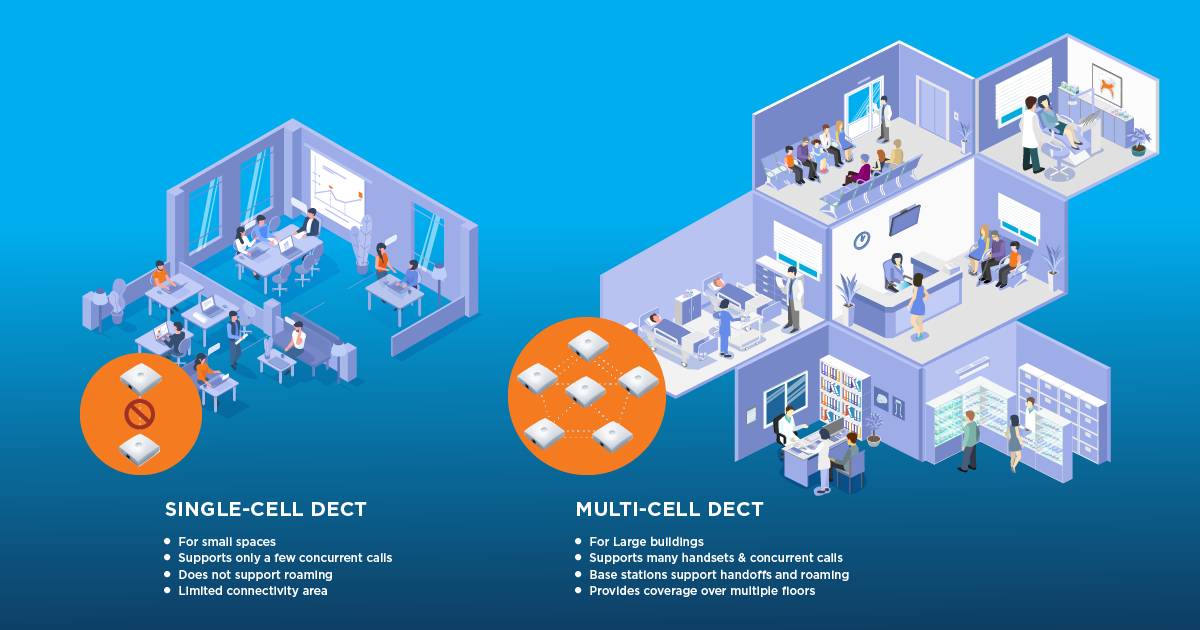Do you have the right DECT solution for your enterprise?

Have you been told there’s no difference in functionality between a single cell or multi-cell DECT solution? What about that you should buy a single cell solution because it is cheaper? If you answered yes to either of those questions, you have likely been mis-sold your DECT and are using a system that is not fit for your enterprise.
DECT is an excellent option for an enterprise communication solution because it is secure, operates on a dedicated voice network, and is dependable, but not all DECT solutions are created equal. So, what is the difference between a single cell and a multi-cell DECT solution, and which is the best for your business?
A single-cell DECT solution is a local radio network for cordless DECT handsets that works perfectly for small offices, home offices, and residential use. It supports around 6 handsets and 4-6 concurrent calls. Although it is cost-effective and simple to install, single-cell DECT lacks scalability to support business as they grow and has a limited coverage area of around 50 meters before the handsets lose connectivity. This means that this system does not support roaming and handovers, so handsets lose connectivity and drop calls when the user moves out of their single-cell zone.
A multi-cell DECT solution is ideal for larger businesses and buildings including multinational offices, warehouses, and industrial locations where great mobility and coverage are required over multiple floors with many simultaneous users. A multi-cell solution allows for the use of multiple base stations that can be placed throughout the building for complete coverage and handset support. As the individual base stations create overlapping and complete radio coverage zones within the building, users can roam the entire premises, remain contactable by voice, messaging, and alarms, and remain on a phone call even when moving across the premises.
The key difference between single and multi-cell DECT is the ability to roam, remain contactable, and talk on the move. Simply put, if you have a single cell solution and buy additional base stations, it will not extend your coverage. Single-cell base stations will not connect to another single-cell base station or extend communication when a handset is outside the coverage of the first base station, resulting in interrupted and dropped calls.
To ensure you buy the right DECT solution, you need to ask the following questions:
- Does your company have on-site mobile workers who need calling, messaging, and alarms notifications as they move across the building/campus?
- Do you work in a large building where workers will roam more than 50 meters from the base station?
- Does your organization require a lot of handsets or make many simultaneous calls?
- Do your mobile workers need to move between floors and buildings while remaining connected?
- Does your company need to leverage its investment in calling and unified communications services for all its workers, including those on-site deskless workers?
If you answered yes to any of the above, then a single-cell solution is not sufficient for your business, and you need an enterprise multi-cell DECT solution.
Spectralink offers world-class multi-cell DECT solutions. Find out more about our DECT product offering here.

